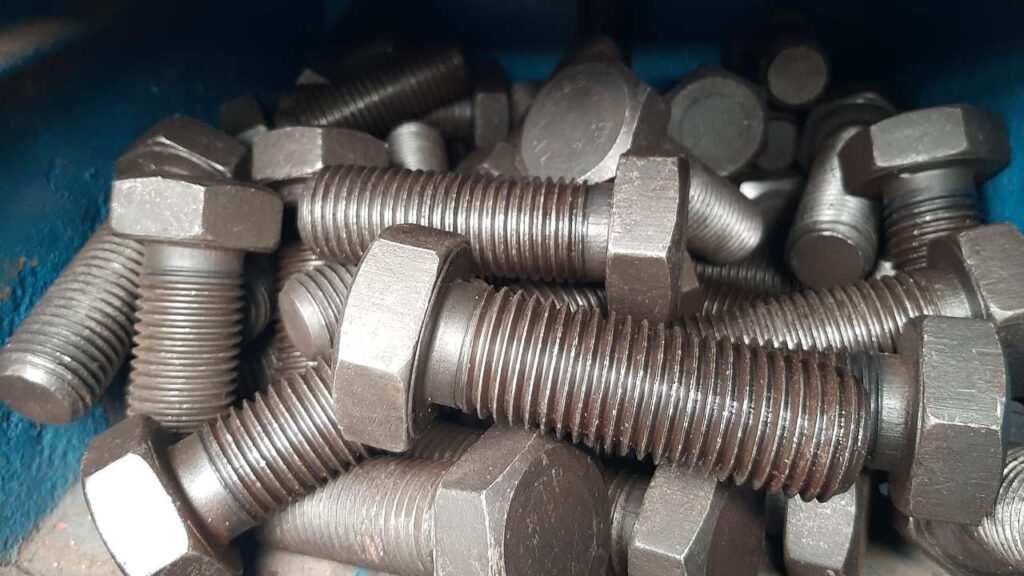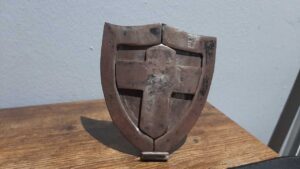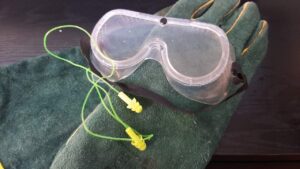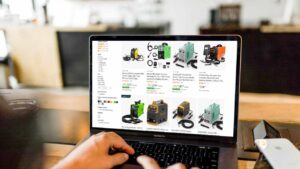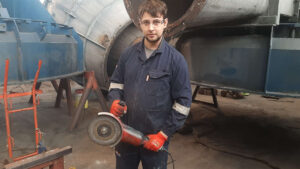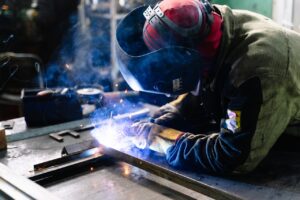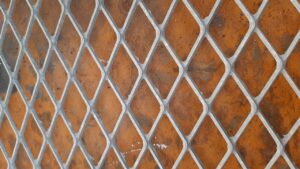Bolting
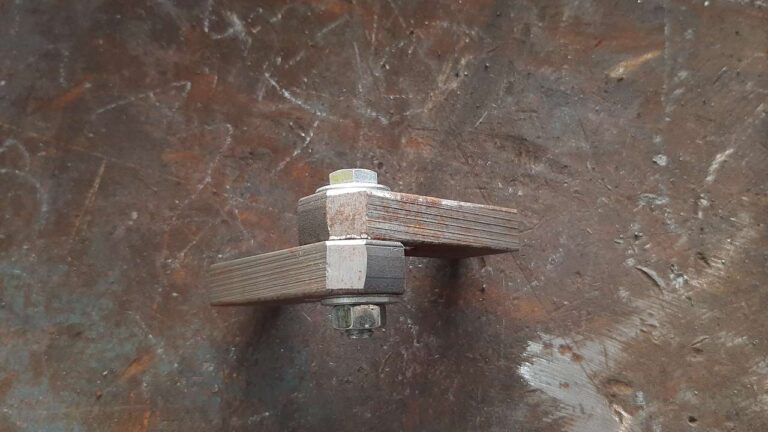
Bolting metal together consist of drilling a hole through two or more pieces of metal and putting a bolt through it and tightening it with a nut. A washer should be used where you are tightening the nut.
This is to reduce the damage to the nut when tightening the nut. Damage to the nut is caused by the holes in the metal because they are about 2mm bigger than the actual size of the bolt. This is done to make it easier for bolts to slip through two or more holes made into the metal. A washer is then placed where you are tightening to avoid the metal from cutting into the nut.
A bolt is a cylindroid piece of metal with a type of head that has threads around the main shaft. There are a whole ton of different types of heads on bolts, but the most common ones are hex heads, cap screws, and countersunk.
Bolting is the strongest way to join metals other than welding but in some cases, it can be stronger. Welding tends to only be strong in one direction whereas nuts and bolts have the same amount of strength in all directions due to their cylindrical shape.
Best use cases for bolting
- Something that has to build and assembled in a different area
- Not a permanent structure
- If welding is only possible from one side and you need strength on all sides
- Structures
Metal gussets
A metal gusset is a plate that has a bunch of holes in it that joins trusses in structures, it can also be used to strengthen angles. Simply mark the holes onto the gusset then translate them onto the different pieces you want to join together.
Gussets are used to join metal profiles together such as angle iron, beams, or channels rather than joining multiple pieces of plates together.
Best use cases for metal gussets
- Joining structures
- Strengthening angles
Metal epoxy
Metal epoxy consists of a resin and a hardener that are mixed together when you are joining the metals. They come in two different tubes that each contain resin or the hardener that you apply to the surface at the same time with a similar amount of each then leave to dry.
This is a great substitute for welding something together because it is more of a permanent solution similar to welding. Once it is applied and dried you will have to use an angle grinder to cut it loose. Only use it for small surfaces or to join small pieces of metal because it is made for small quick fixes rather than to build something with.
Keep in mind that how you apply it is how it will look in the end, so while it is still wet try to smoothen it as much as possible with a piece of cardboard that you can throw out afterward. This will give a neater appearance but is still a far cry from the neat and clean appearance of welding.
If you are looking to build something at home with metal that has to take a permanent or strong shape I would recommend you just use get welding best suited for home use. Metal-epoxy won’t last nearly as long as welding or be as strong as it to begin with.
Best use cases for metal-epoxy
- Quick fixes
- No welding available
- Can’t apply heat
- Fixing old gardening tools
Note: metal-epoxy shouldn’t be used to build something but rather to just fix something.
Glue/Adhesive
There are different types of glues available but only a limited amount can work on metal. These glues are not really used to join metals but rather used to join other materials to metals such as gluing wood or plastics to a metal surface.
You should always try to maximize the surfaces you are sticking to and not try to use an excessive amount of glue.
Best use cases for glue on metal
- Joining other materials to metal like wood, plastic, or rubber
- Join flat surface of thin metal plates
Pop rivets
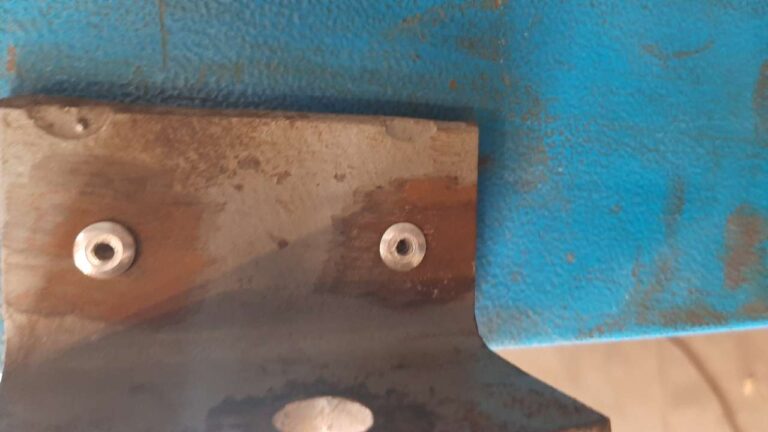
Pop rivets are ideal for joining thin pieces of metals. Like nuts and bolts, pop rivets fit through holes drilled into metal, but unlike bolts, these holes should match the size of the rivet giving a 0.2mm leniency.
Where nuts and bolts can easily be removed and placed again pop rivets are more of a permanent solution because once you have “popped the rivet” you won’t be able to reuse it and removing it will require a bit of work.
Modern pop rivets are generally limited to smaller holes, but in the days before welding pop rivets were the main way of joining metal, but were done a bit differently. You can go and read up on the history of pop rivets if you are interested.
Airplanes still use pop rivets instead of welding because welding is placed on the edge of a structure and can be weak on the side where there isn’t any welding. Pop rivets like bolts can be placed further from the edge, thus increasing the strength of the joint.
Best use cases of pop rivets
- Joints for moving tools like scissors
- Joining thin plates where welding might cause too much distortion
- Joining hinges to metal
Slide-in brackets
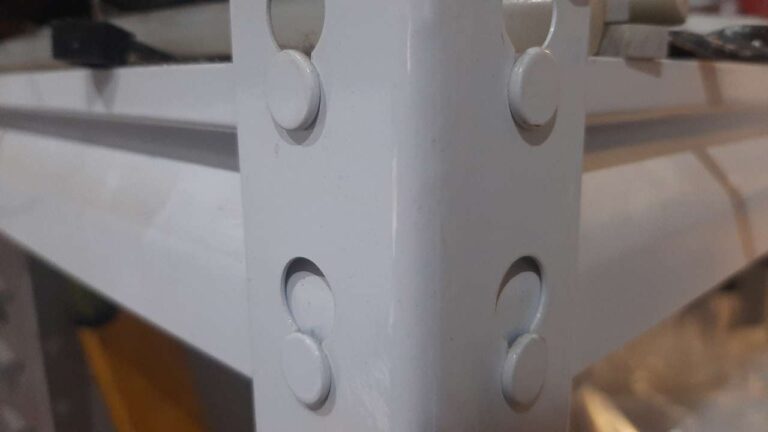
Slide-in brackets are more common in pre-fab factory-bought structures like tool storage racks. They consist of slot holes similar the what you will get in those chain lock door locks. There is one hole large enough for the pin to fit in then a small slot connected to the large hole to slide the pin into to keep it locked in place.
These types of joints are great for structures that might need to be adjusted constantly to fit in different-sized objects. They aren’t as strong as welding but they can be adjusted which makes it a major plus point.
Best use cases for slide-in brackets
- On pre-fab factory-built structures
- For easy adjustability
Dedicated brackets
On special occasions, you can get brackets that are dedicated to holding something in place or holding it together. These brackets can be made from steel or even plastic. Some brackets can even incorporate bold and nut for tightening.
Places where you can find these types of brackets are using also incorporated in pre-fab steel structures that just have to be put together out of the box. Where you might find it in the industrial sector is for holding grating in place to keep it from moving while you walk over it.
A dedicated bracket can also be a piece of plate that has two or more holes in it to join two or more other plates. Similar to metal gussets that are used in structures.
Best use cases for dedicated metal brackets
- Using it for what it is made for
- Pre-fab structures
Using a softer material as a buffer
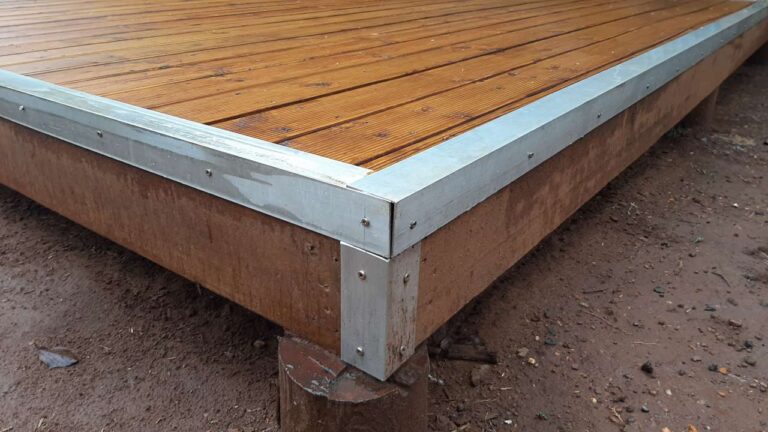
Another common way you can join metals is just by simply using a softer material, such as wood that can easily be screwed into, to act as a buffer between the two pieces of metal.
Just connect the first piece of metal to the wood then continue to connect the second piece to the same piece of wood. You can drill a small hole that accommodates the screw into the metal, then screw in the screw through the hole into the wood. Else if the metal is thin or soft enough you can use self-drilling screws or metal screws to just drill straight through the metal. Remember to first make a pop mark before drilling into the metal.
Best use cases for softer material as a buffer
- To give a wooden surface a metal frame around it.
Conclusion
There are a lot of alternatives to welding but they tend not to be as strong or as permanent as welding. You would have to consider what your final goal is and what functionality does your project need to achieve.
If you are simply building a square frame that doesn’t need to move at all then it is best to weld it together. Else if you are looking for something that needs to be movable or just don’t have access to welding then you can use one of these methods.

